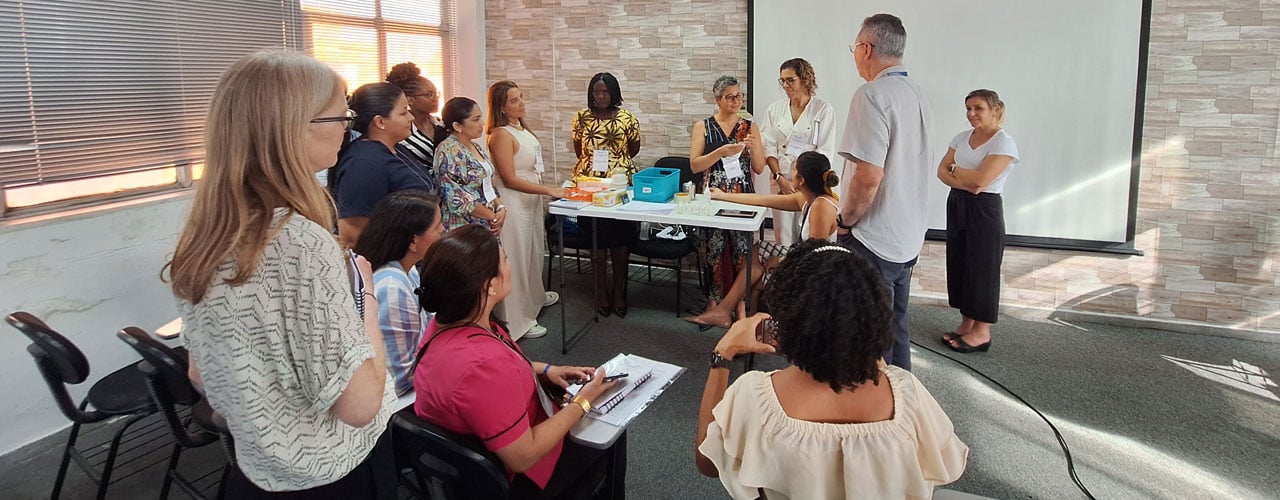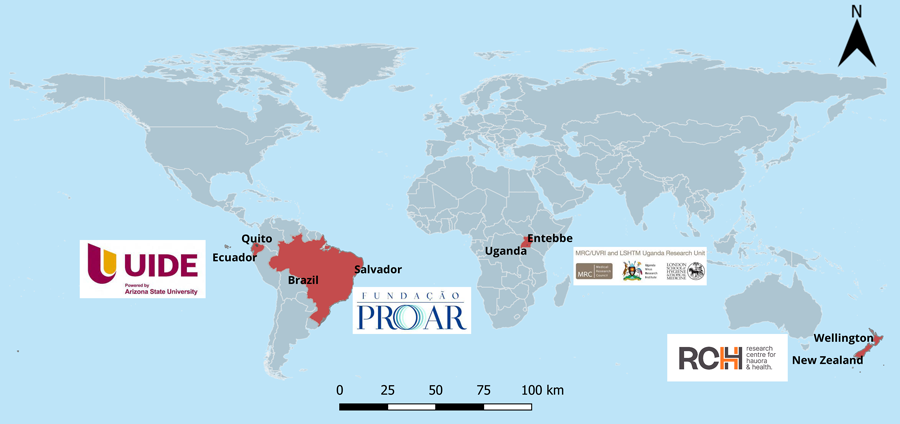The CAMERA team comprises epidemiologists, clinicians, and scientists collaborating to elucidate non-atopic asthma causes and mechanisms. Under the direction of Professor Neil Pearce, our multi-disciplinary, international collaboration leverages cutting-edge methodologies across diverse settings to substantially advance comprehension of non-atopic asthma pathogenesis and prevention through an integrative approach.
The CAMERA study investigates the causes and mechanisms underlying non-atopic asthma in children. It examines risk factors for over 7,000 cases across four centers, and clinically investigates three mechanistic pathways (sensory nerve hyperreactivity, bronchial responsiveness, cellular inflammation) in 160 participants in each center to elucidate non-atopic asthma etiology and advance prevention and treatment of NAA.
The CAMERA research team is composed of epidemiologists, clinicians, and scientists working collaboratively to shed light on the causes and mechanisms underlying non-atopic asthma. Led by our principal investigator, Professor Neil Pearce of the London School of Hygiene and Tropical Medicine (LSHTM), we leverage multi-disciplinary expertise spanning population health surveys, clinical evaluations, and laboratory techniques. Our group includes experienced researchers and physician-scientists from institutions in Ecuador, Brazil, Uganda, and New Zealand. Together, we aim to significantly advance understanding of non-atopic asthma by integrating state-of-the-art approaches for investigating disease etiology and pathophysiology. Our centers offer diverse settings for studying non-atopic asthma. With guidance from engaged patient partners, we hope to generate evidence and insights to meaningfully impact prevention, diagnosis, and treatment of non-atopic asthma internationally. Our shared commitment to illuminating this pressing health issue drives progress towards improved patient outcomes worldwide.
Brazil
- Camila Figueiredo
- Gabriela Pimentel
- Cinthia Vila Nova Santana
- Candace Machado de Andrade
Ecuador
Uganda
Wellington
- Professor Jeroen Douwes
- Dr Collin Brooks
- Hajar Ali
LSHTM, London
- Professor Neil Pearce
- Lucy Pembrey
- Mary Njoroge
- Steve Robertson
- Charlotte Rutter
- Donna Davoren
The CAMERA study is split into two work packages to be conducted over five years. Work Package 1 (WP1) involves large-scale case-control analyses to investigate causes of non-atopic asthma (NAA) across multiple settings. Over 7,000 asthma cases and 40,000 controls ranging between ages 7-20 years from 4 CAMERA centers and additional datasets will be studied. Innovative statistical approaches will tease out risk factors for NAA versus atopic asthma (AA), examining distinct causal pathways. Analyses will encompass demographic, lifestyle, environmental, and psychosocial stress exposures.
Work Package 2 (WP2) selects 160 participants per CAMERA study centre (40 AA, 40 NAA, 40 atopic non-asthmatics, 40 non-atopic non-asthmatics) for clinical investigations of three potential NAA mechanisms. The Capsaicin challenge will assess sensory nerve hyperreactivity. Cold air challenge will evaluate bronchial responsiveness. IFN-gamma production will test cellular inflammation patterns (TH1-mediated inflammation). Hair cortisol will measure long-term stress exposure. Comparisons between the four groups, adjusted for confounders, will determine the importance of these mechanisms for NAA specifically.
By investigating NAA causes and mechanisms across diverse settings and integrating evidence from work package 1, CAMERA aims to substantially advance the current understanding of NAA etiology and mechanisms. Our findings will inform prevention initiatives for NAA, improved diagnosis/monitoring, and development of tailored treatments, benefiting patients globally.
Project training
- CAMERA researchers training on conducting clinical procedures (SPT, nasal lavage, dry air challenge, cold air challenge, capsaicin challenge, blood sampling and lung function test).
- CAMERA researchers training on recruitment, data collection and data transfer using different databases.
Training opportunities
- PhD training opportunities stemming from CAMERA.




